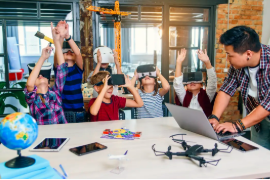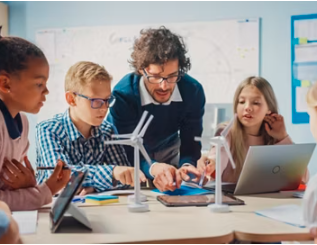In recent years, educational technology—often referred to as EdTech—has reshaped classrooms around the world. From urban schools in New York to remote communities in Africa, digital tools are creating more dynamic, personalized, and inclusive learning experiences. As educators and students continue to embrace technology, classrooms are evolving in ways that once seemed unimaginable.
Digital Tools Breaking Down Barriers
One of the most notable impacts of EdTech is its ability to bridge gaps in access to education. Interactive platforms, virtual learning environments, and mobile apps now allow students in underserved areas to engage with the same high-quality resources available to their peers in more developed regions. This equal access supports lifelong learning and helps narrow achievement gaps.
Personalized Learning Experiences
Thanks to adaptive software and learning management systems, teachers can now tailor instruction to each student’s pace and learning style. For example, a math app might adjust difficulty levels in real time, providing targeted practice for a student who needs it while challenging another who’s ready to advance. This personalization keeps learners engaged and motivated.
Collaboration Beyond Borders
Global learning has become more accessible through video conferencing tools, cloud-based platforms, and virtual classrooms. Students can collaborate on projects with peers across continents, share perspectives, and develop a deeper understanding of different cultures. These experiences prepare learners for a more connected and diverse world.
Empowering Teachers with Insights
EdTech also equips teachers with valuable data on student progress. Dashboards and analytics tools make it easier to identify learning patterns, spot challenges early, and provide timely support. This data-driven approach enhances instruction and allows educators to make informed decisions that benefit their students.
Interactive and Engaging Content
Traditional textbooks are giving way to multimedia-rich lessons that combine videos, simulations, and gamified quizzes. These interactive formats not only hold students’ attention but also make complex concepts easier to understand. Whether it’s a science simulation or a history timeline, EdTech brings subjects to life.
Challenges and Considerations
While the promise of EdTech is exciting, it’s important to ensure equitable implementation. Access to devices, internet connectivity, and digital literacy training are all essential components of successful integration. Educators and policymakers must work together to ensure no student is left behind in this digital shift.
Looking Ahead
The global classroom is no longer a distant vision—it’s happening now. As EdTech continues to evolve, it holds the potential to make learning more inclusive, innovative, and effective for students worldwide. With thoughtful implementation, education systems everywhere can harness the power of technology to prepare learners for the future.














